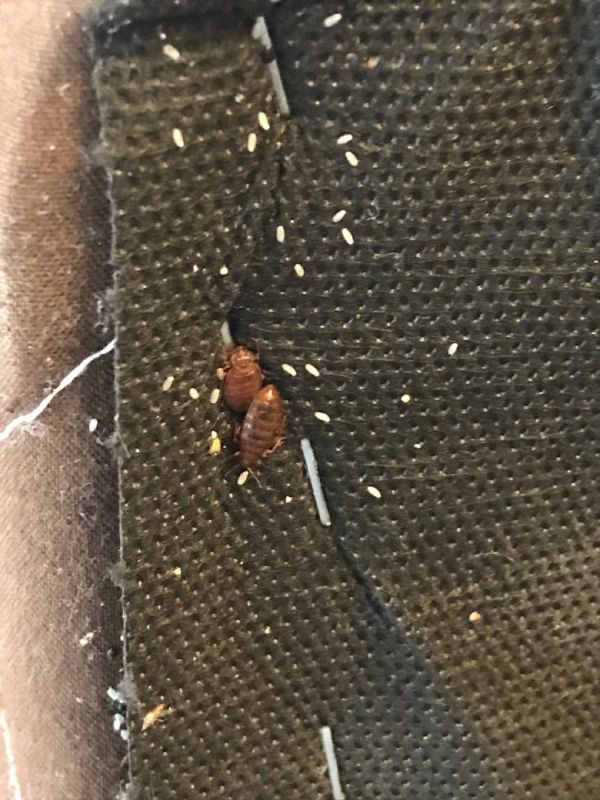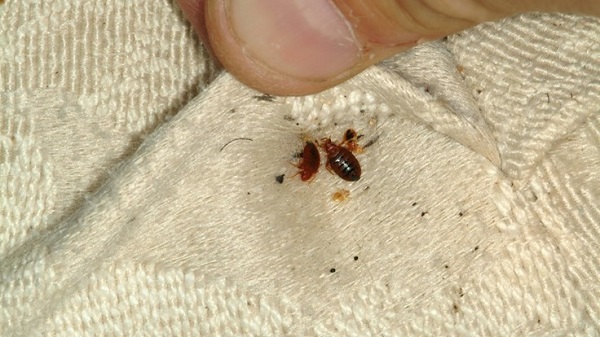Exploring the Science Behind Bed Pest Warmth Treatments as a Sustainable Bug Management Approach
In the realm of bug administration, the mission for sustainable and efficient options remains a consistent quest. One such approach that has actually gotten grip recently is the usage of warmth treatments to deal with bed insect invasions. By using the science behind thermal fatality points for these consistent pests, heat treatments supply an encouraging option to traditional chemical-based methods. The complexities of just how warm efficiently eliminates bed insects and the wider effects for lasting bug monitoring methods make this a topic worth checking out even more.
Bed Insect Warm Therapy Refine

Thermal Fatality Point for Bed Pests
Revealing bed bugs to elevated temperatures past their thermal resistance range is critical for achieving reliable removal in warmth treatment procedures. The thermal death point for bed pests refers to the temperature level at which these bugs can not survive. Study indicates that bed pests start to perish when subjected to temperature levels above 113 ° F(45 ° C) for a continual duration. As the temperature boosts, so does the mortality rate of bed bugs. At around 118 ° F(48 ° C ), bed insects start to die quickly, with a mortality price of virtually 99% within mins of exposure. This shows the sensitivity of bed insects to heats and highlights the effectiveness of warmth therapies in getting rid of problems. By reaching and preserving temperature levels above the thermal death factor for bed pests, parasite management professionals can make sure thorough removal of bed pest populaces, consisting of hard-to-reach locations where chemical therapies might be much less reliable. Understanding the thermal death point for bed bugs is necessary for applying effective warmth therapy strategies and achieving sustainable pest administration results.
Advantages of Warmth Treatments
Having developed the crucial thermal death point for bed pests, it is critical to now explore the significant benefits that warm therapies offer in successfully getting rid of these resilient insects. One of the main benefits is that warmth can penetrate deep into gaps and cracks where bed bugs hide, making sure that also the most hard-to-reach locations are warmed to dangerous temperatures.
Additionally, warm therapies are ecologically friendly and safe, making them a lasting parasite management strategy. Unlike chemical pesticides, warm treatments do not leave dangerous deposits that can pose dangers to human wellness or the setting. This facet is specifically important in sensitive atmospheres such as medical facilities, institutions, and suburbs where chemical usage may not be desirable.
Furthermore, warm therapies have a high success price in removing bed pest infestations in a solitary therapy, decreasing the need for numerous brows through and decreasing interruption to residents. This efficiency not just conserves time and cash however likewise supplies comfort to those handling bed insect problems.
Effectiveness of Warmth Therapy

Research study studies have actually constantly demonstrated the efficiency of warmth treatments in achieving a high rate of bed pest mortality. Correctly performed heat treatments can reach all the splits and crevices where bed insects might be harboring, making certain an extensive approach to extermination. Heat treatments have actually the included benefit of eliminating bed insect eggs, which are usually resistant to traditional chemical therapies. Overall, the efficiency of warmth treatments in eliminating bed pest infestations makes them a trustworthy and sustainable pest monitoring technique.
Lasting Bug Administration Perks
Executing sustainable parasite monitoring methods offers lasting advantages for both the atmosphere and public health. By making use of techniques such as Learn More Here heat therapies for insect control, we can reduce the dependence on damaging chemical pesticides that can have adverse results on ecological communities and human health and wellness - DC exterminator. Lasting bug management approaches assist in maintaining biodiversity by targeting certain pests without damaging non-target organisms, thereby preserving a balanced environment
Moreover, sustainable bug management methods contribute to the total health and health of the general public. By lessening exposure to poisonous chemicals utilized in conventional parasite control techniques, heat therapies offer a more secure option for pest administration in residential, business, and public rooms. This reduction in chemical usage additionally assists in preventing chemical residues from infecting dirt, water, and air, safeguarding ecological top quality.
Conclusion
Finally, bed pest heat therapies have been shown to be a sustainable and effective insect administration strategy. The thermal death point for bed insects makes them prone to warmth treatments, which have many benefits over traditional chemical treatments. The efficiency of warmth treatments in getting rid of bed pest infestations while decreasing environmental effect highlights the possibility of this approach as a sustainable option for parasite control.
The bed bug warm treatment process article source includes raising the temperature within plagued areas to a degree that successfully removes bed bugs and their eggs. By getting to and maintaining temperatures above the thermal death point for bed insects, bug monitoring professionals can make certain detailed removal of bed pest populaces, consisting of hard-to-reach areas where chemical treatments might be much less efficient. One of the primary benefits is that warmth can permeate deep into gaps and cracks where bed pests conceal, making sure that even the most hard-to-reach locations are heated up to lethal temperature levels. Unlike chemical therapies that may leave behind immune populations, heat therapies provide a environmentally pleasant and non-toxic solution that can pass through deep into furnishings, wall surfaces, and other hard-to-reach areas where bed bugs conceal.
The thermal death point for bed bugs makes them prone read this to warmth treatments, which have many advantages over conventional chemical treatments.